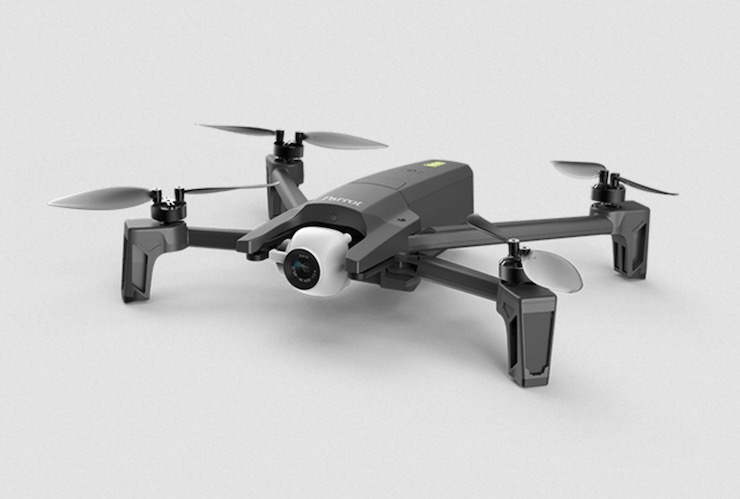
© Parrot.com
China-based DJI is widely recognized as the world’s leading UAV manufacturer, cornering between 70% and 80% of the total drone market. DJI exercises such complete dominance – not just over global production and exports, but also over new technology development – that other firms rarely get mentioned in discussions about the future of the industry.
But competitors do exist, and at least one is beginning to rival DJI. Who is it? The France-based firm Parrot, founded in 1994.
Parrot’s original mission was to sell wireless communications and connected home devices. Initially, the company made a name for itself with a string of innovative products, including a self-watering system for plants and a telephone system for the blind called Voice Mate (made famous by musician Stevie Wonder). In fact, Parrot didn’t even begin drone manufacturing until 2012, when it bought 57% of Swiss drone company SenseFly as well as 25% of the Swiss photogrammetry company Pix4D.
In 2014, Parrot introduced the mini-drones Rolling Spider and Jumping Sumo. For a while, the company seemed destined to develop a lucrative side business in the rapidly expanding toy drone market.
Instead, in 2017, it fired a third of its work force and decided to devote itself exclusively to UAVs. Its reputation for bold innovation has grown ever since. Its Disco FPV was the world’s first smart-flying fixed-wing drone. Then in 2018, Parrot made an even bigger splash by introducing its Anafi folding drone. Its 4K HDR and 21 megapixel camera was top-of-the line.
But Parrot’s latest version of its Anafi drone –developed in conjunction with Switzerland-based Drone Harmony and equipped with 4G connectivity – takes automated drone missions into entirely new territory. The drone can perform fast, accurate data collection – and 3D mapping – even in urban areas where structural and other interferences often make Wi-Fi connections challenging.
But with 4G, Parrot’s new drone can also conduct these activities remotely – indeed, from thousands of miles away. In theory, a remote operator in Paris can pilot an 4G Anafi drone in New York to map a piece of real estate or a new construction site in Manhattan, and receive and process the images in real time – with the entire operation conducted through the Internet.
Parrot’s competitive advantage over DJI could well improve in the coming years. Rightly or wrongly there are growing concerns at the Pentagon and in the US Congress over DJI’s relationship to the Chinese government and Beijing’s ever-expanding security ambitions. Some US companies (and some military services) are pulling back from DJI and Parrot is increasingly likely to fill the void. Three years ago, Parrot was selected by the Pentagon for a major new contract (worth $11 million) for the production of a top-secret reconnaissance drone. In 2021, Parrot secured a deal with the French army to manufacture 300 micro-drones. In 2023, more military contracts are forthcoming.
Make no mistake: DJI is not going away. The Chinese company’s manufacturing and design capabilities – and the scope of its cutting-edge applications, from fire fighting to space travel – are still unsurpassed. But a new bird is beginning to flap its noisy wings in Drone World; the skies are about to get a little more crowded. In a competitive economy, that’s a good thing.
|